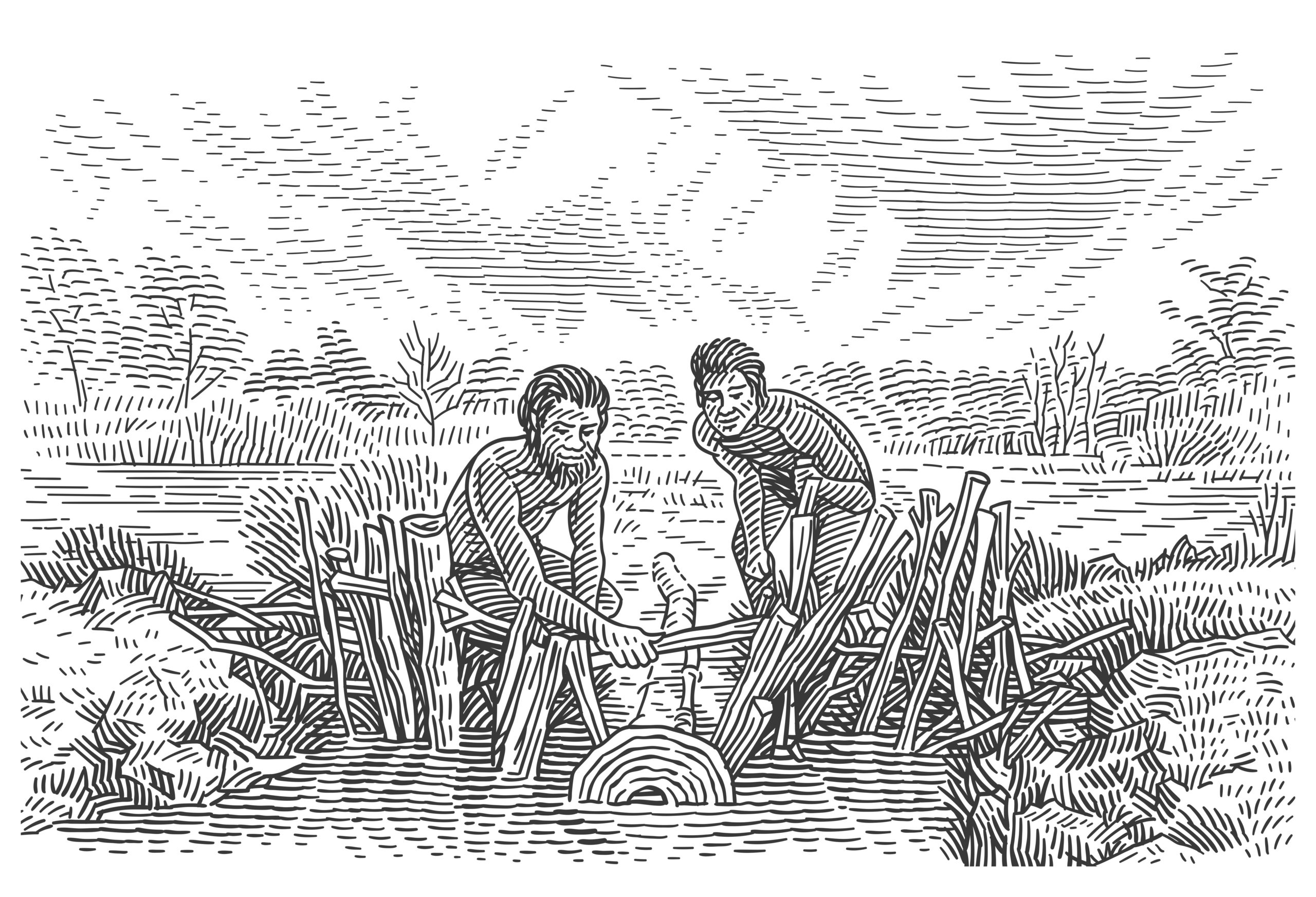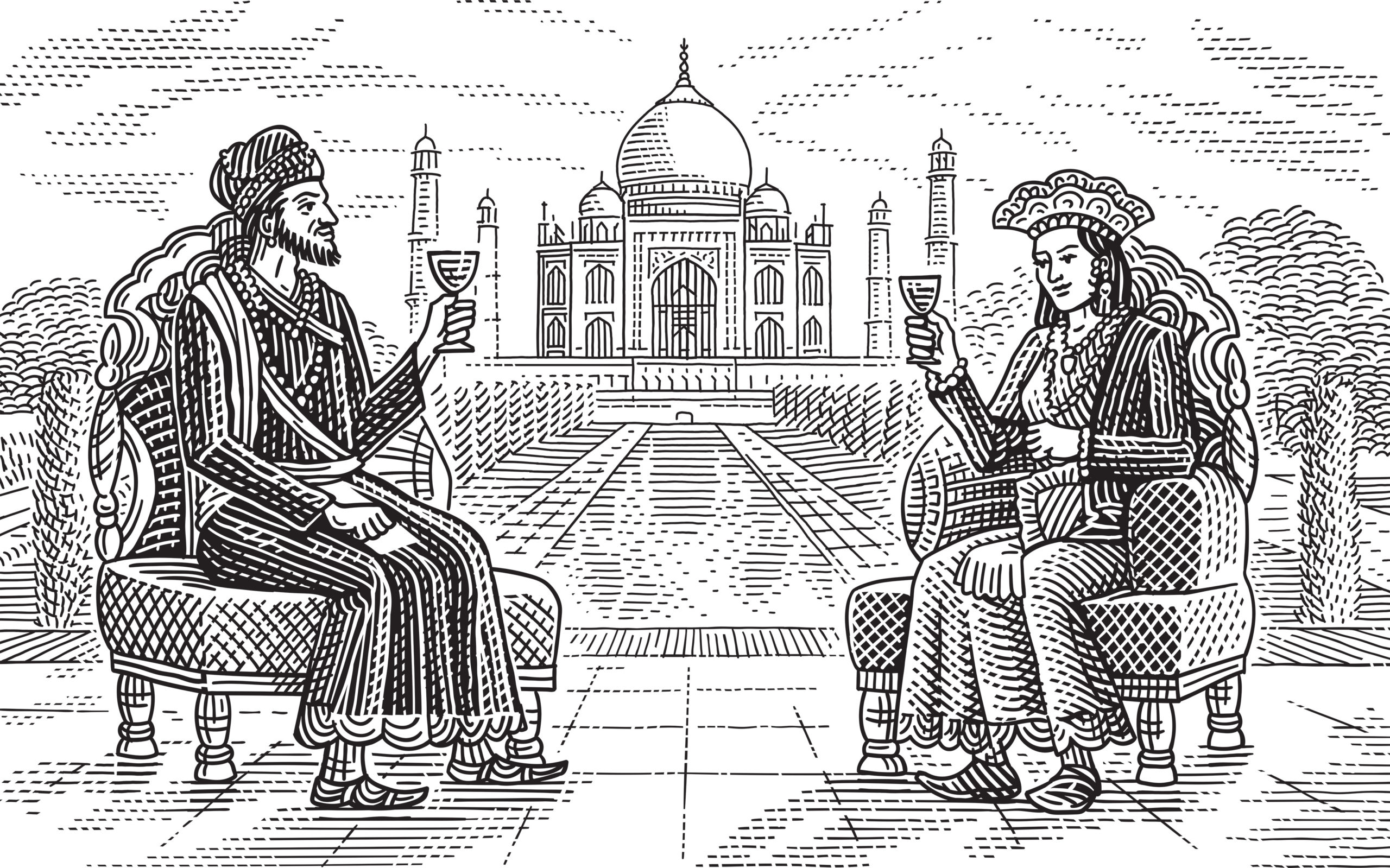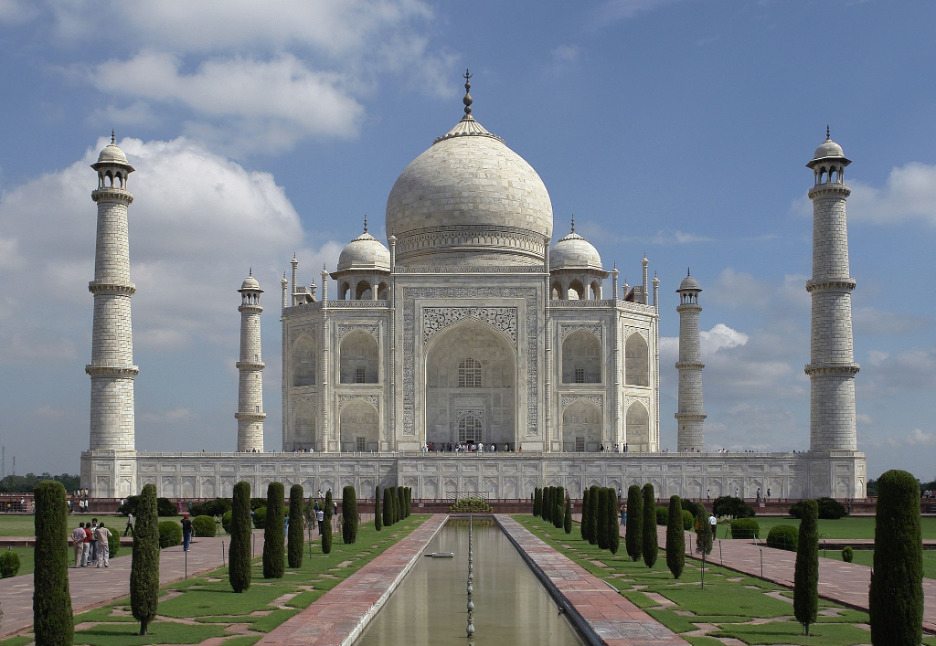Today marks the thirty-second chapter in a series of articles by HumanProgress.org called Centers of Progress. Where does progress happen? The story of civilization is in many ways the story of the city. It is the city that has helped to create and define the modern world. This bi-weekly column will give a short overview of urban centers that were the sites of pivotal advances in culture, economics, politics, technology, etc.
The thirty-second Center of Progress is the historic site at Budj Bim in southeastern Australia. Budj Bim, meaning “high head,” is a dormant volcano, the dried lava of which has been crafted into a series of manmade channels, weirs, walls, and dams that may represent humanity’s oldest aquaculture system.
Aquaculture is the cultivation of aquatic organisms. Some forms of aquaculture, like fish and eel farming, involve animal husbandry, a breakthrough in food security. Animals, after all, are harder to manage than immobile plants but are also a better source of protein. Aquaculture shaped early human society in some areas of the world as much as agriculture did in others, encouraging permanent settlement and defining the rhythms of daily life. The vast aquaculture complex at Budj Bim exemplifies the innovative ways in which humans have shaped their physical environments to combat hunger throughout history.
A few other animals cultivate food from watery surroundings. The damselfish, for example, weeds its rudimentary algae gardens and aggressively defends the “crop” from other much larger creatures. However, no other living creature besides humans has come anywhere close to true aquaculture.
The ruins at Budj Bim are older than the Egyptian pyramids and the English Stonehenge. Parts of the stonework system were built before 4,500 B.C., predating early examples of hydraulic engineering in many northern hemisphere civilizations. Radiocarbon dating suggests that humans may have created many of the system’s artificial ponds as far back as 6,000 B.C. Construction of some of the extensive site’s groundwork may have even begun between 6,000 and 7,000 B.C.
Today, this large area of modified wetland, spanning around 40 square miles, is peaceful and remote: a tranquil scene of water, volcanic rock, and wildlife. Picnickers enjoy the view as black swans glide along the many spring-fed creeks, and koalas look on from above in the tall, twisted manna gum trees and angular blackwoods. Many areas that were underwater when the aquaculture system was active are now dry. But evidence of the locale’s ancient significance can be seen in the scattered stone remnants of prehistoric eel traps, manmade channels, and house sites spread across the Budj Bim area. A recent series of wildfires revealed previously unknown swathes of the complex that had been overgrown by vegetation.
The native people are known as Gunditjmara, an Aboriginal Australian clan group. In 2019, UNESCO designated the Budj Bim Cultural Landscape a World Heritage Site, noting, “Aquaculture acted as the economic and social base for Gunditjmara society for [at least] six millennia.” Of course, it is possible that other clan groups also contributed to the creation and maintenance of the stone complex at Budj Bim over the course of its lengthy history.
The site was probably born out of a series of volcanic eruptions that began around 30,000 years ago, which created the outpouring of lava that hardened into basaltic rock and later provided the raw building material for the aquaculture system. The Budj Bim volcano, also known as Mount Eccles, erupted at least ten times, with the most recent eruption occurring around 7,000 years ago, or around 5,000 B.C. Stone tools found underneath the oldest layer of volcanic ash prove that humans have inhabited the area since before the volcano erupted. The Gunditjmara’s oral histories seem to describe the volcano erupting as part of a creation myth, which some scholars take as evidence that the Gunditjmara may have “some of the oldest oral traditions in existence.” The Gunditjmara pride themselves on their tradition of storytelling. According to their mythology, the now-dormant volcano is a creator-god or ancestral-being that brought Gunditjmara society into existence. The Gunditjmara call the rock-filled lava flow area tungatt mirring or “stone country.”
It is certainly true that the hardened lava from the volcano provided an advantageous natural resource. Ultimately though, it was human ingenuity that transformed the lava landforms and waterways from a rocky swamp into a steady source of abundant food. Eel farms provided the mainstay of the Gunditjmara diet and a product to trade with other clan groups. Aquaculture, in other words, furnished the basic driver of their economy and culture. The practice was also intertwined with the Gunditjmara religion, and they considered the eel to be a sacred animal. The people also farmed galaxia fish and ate freshwater mussels and other aquatic creatures. They further supplemented their seafood diet with the meat of land animals they hunted, such as ducks, as well as plains turkeys, goannas, and kangaroos. They managed their hunting grounds with a system of low-intensity, intentional fires that burned away hazardous dry brush and helped create ideal habitats for hunting game. They also cultivated and ate various vegetables like murnong, also called yam daisy.
As with agriculture, the tasks required to maintain an aquaculture-based society are often dictated by the changing seasons. While some eels can be found in the area year-round, during certain periods of the year they number in the millions. The native eel species, Anguilla australis, can grow to over 40 inches long and weigh over seven pounds. The local galaxia fish, a slim species with a mottled pattern, usually about four inches long, are also migratory and, in the right season, could be caught in the tens of thousands. In the spring, the eels travel along rivers from the sea to their marshy inland feeding grounds. During the subsequent wet season, the marshlands burst with eels. Then, in autumn, the eels return to the sea to breed.
The local people recognized that these predictable patterns of migration provided an opportunity that they could exploit to ensure a stable supply of food. “It shows us they had a high level of technical skill, understanding of physics and of the natural environment,” according to University of Washington archeologist Ben Marwick. Drawing upon their observations of changes in water levels and eel migration routes, the Gunditjmara people manipulated the seasonal flooding with manmade channels and weirs, diverting the water flow to trap eels and fish. They also took care not to over-harvest and risk depleting the eel or fish populations.
If you could travel back in time to when the aquaculture system was in active use, you might observe workers carefully adjusting the stonework, perhaps replacing the basalt in an area where older stones had fallen away or adding in a new section. Researchers believe the ancient engineers “continually modified the system.” The stones formed a complex network of artificial channels–some over a thousand feet long–that diverted water to shepherd migrating eels and fish. Some of the aquatic creatures were driven into hand-woven nets for immediate harvest, and others were guided into holding ponds or pens to be collected later. All in all, there were at least 70 functional aquaculture systems. In those artificial ponds, the corralled eels grew fat, feeding on local insects, water snails, frogs, and small fish, until the time came for them to be eaten. Woven baskets set in weirs built from volcanic rock and wooden lattice structures would then capture the seafood.
Walking away from the elaborate trap system to visit the settled community nearby of perhaps 600 people–although that population estimate is likely to be revised upwards–built on the edge of the waterways, you would have seen numerous stone huts with fireplaces. You would have also seen women weaving baskets for the weirs used to cull mature eels, men returning from the eel traps hauling a fresh harvest in such baskets, and people preparing the eels for consumption, first by cleaning and gutting them. And you would have witnessed them smoking the rich, oily eel meat with burning leaves from blackwood trees. Researchers have found eel lipids in the earth beneath burnt, hollowed-out trees, suggesting that they were used as family cooking hearths and smokehouses to prepare the eels for trade with other tribes.
Smoking is often considered humanity’s earliest method of meat preservation, allowing meat to be stored for the off-season as well as transported and used as a trading commodity. By drying out the flesh, smoking makes it less hospitable to bacteria that need moisture to grow, and chemicals released from the smoke have antibacterial properties that further safeguard the meat. Smoking also cooks the eel meat, which is poisonous when raw. Eel blood contains a potentially deadly toxin that cramps muscles and can stop the heart from beating. Cooking breaks down the toxin. The Gunditjmara served the eels in a variety of ways. The eels’ bones and skin could be used to create flavorful cooking stock, and the meat could be complemented with local plants such as kelp and saltbush.
For millennia the aquaculture system yielded a reliable food supply, and it was still in use when the British came to the area in the 19th century and provided the first written accounts of the elaborate stone-walled facilities. In 1841, the British colonial official and preacher George Augustus Robinson arrived on an exploratory expedition and described the aquaculture system as “resembling the work of civilized man.” But he also noted, evidencing the prejudices of the era, that “on inspection I found [it] to be the work of the Aboriginal natives, and constructed for the purpose of catching eels.”
“It is hardly possible for a single fish to escape,” he continued. “[T]riple water courses led to other ramified and extensive trenches of a most torturous form.”
Today the Gunditjmara people co-manage, along with the Australian Government, the Budj Bim National Park, which encompasses the ruins of the sprawling Budj Bim aquaculture system. Some of the descendants of the ancient engineers and fishermen who masterminded the aquaculture complex still catch eels and cook them using traditional methods. Various Australian localities even hold eel festivals celebrating eel recipes, both ancient and modern.

A steady supply of food is necessary for any society to function. Budj Bim demonstrates the antiquity of humanity’s quest to stave off hunger by deliberately managing the environment. For millennia the Gunditjmara transformed and enriched their local ecosystems with clearing-fires, stone infrastructure, and artificial ponds. Their elaborate system of water manipulation to systematically trap, store and harvest seafood represents one of the oldest aquaculture systems in the world. For those reasons, Budj Bim is fittingly our thirty-second Center of Progress.




